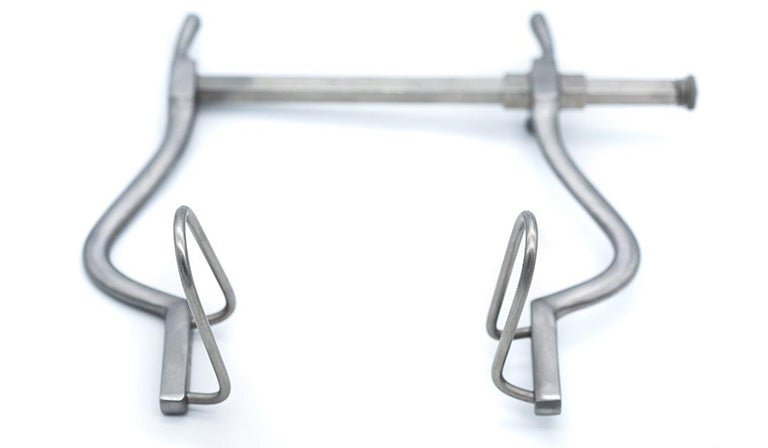

· By Trevor Horne
Medical Instrument Spotlight: Surgical Retractors
One of the key components of a surgery is to keep a wound open while the surgeon operates on the wound site. Alongside other PPE, a surgical retractor is necessary. It is also used for grasping human tissue and flesh. By keeping the wound open, it allows for better visibility for nurses and surgeons to effectively assess the extent of the injury. This is important to ensure that the surgeon does not damage nearby organs accidentally. Retraction is one of the key factors in ensuring a successful surgery. We provide much-needed expertise. Let’s dive into what kind of surgical retractors are there.
What Do Surgical Retractors Look Like?
A surgical retractor’s handle is usually notched, hooked or ring-shaped to allow the surgeon a good grip to prevent surgical fatigue. The blades typically form a right angle to the shaft and are either hooked, smooth or raked.
What Are Surgical Retractors Made Of?
Surgical retractors are made of high-grade stainless steel to keep the internal organs retracted during an operation. Stainless steel can be sterilized easily and is very robust. The only drawback for stainless steel surgical retractors is that they tend to be slippery when exposed to other body fluids, such as blood. This may potentially lead to tissue damage. The other downside of stainless steel is the reflective surfaces that can be flaring with intense illumination during a surgery.
What Are The Types Of Surgical Retractors?
In general, there are two kinds of surgical retractors that are commonly used. The first ones are called hand retractors and the other is called self-retaining retractors.
Hand retractors have to be used manually. These are the different types of hand retractors:
- Farabeuf surgical retractors: Used for multiple procedures but typically used for hernia, hand and wrist operations
- Hohmann surgical retractors: Used to show the bones in orthopedic surgeries
- Meyerding surgical retractors: Often used in laminectomy and other neurosurgical surgeries to hold back muscle and tissues. Also used in spinal surgeries.
- Deaver surgical retractors: Usually used to hold back deep chest or abdominal incisions. Often utilized in cholecystectomy and hold back the liver’s right lobe. Can also be used in tuncal vagotomy to hold back the liver’s left lobe
- Richardson surgical retractors: Used for abdominal or chest incisions. It’s one of the widely used hand retractors and is capable of retracting a number of deep tissue layers at the same time
- Army-Navy surgical retractors: Used to hold back small or shallow incisions. Typically used for abdominal surgeries and small wounds.
Meanwhile, self-retaining retractors keep their adjusted position once it’s shape is locked. These are some self-retaining surgical retractors
- Finochietto rib retractor: Used in thoracic surgeries to pull apart the ribs
- Weitlaner surgical retractor: A widely used surgical retractor in joint surgeries, large bone procedures and plastic surgeries
- Balfour abdominal retractor: To hold back the edges of open wounds for deep abdominal operations
- Gelpi surgical retractor: Usually used for smaller incision sites in spine injuries
- Hip retractor system: It enables the personnel to have quality visibility for hip fractures and hip arthroplasty surgeries.
Contact Us To Find Out More!
Ultimately, there are a huge variety of surgical retractors available for different kinds of operations and varying body parts. As a tool to expose and retract a particular surgical site, it offers better visibility and safety during the operation. Contact us to find out more about surgical retractors!